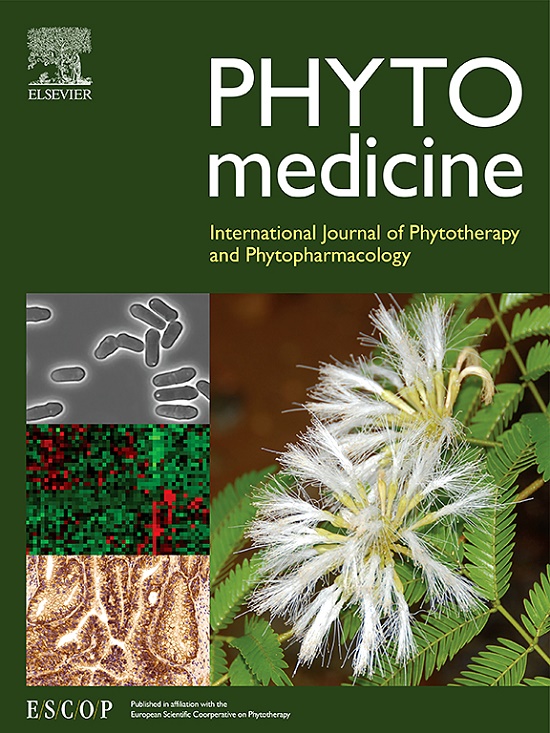Integrated identification and mechanism exploration of bioactive ingredients from Salvia miltiorrhiza to induce vascular normalization
IF 6.7
1区 医学
Q1 CHEMISTRY, MEDICINAL
引用次数: 0
Abstract
Background
The clinical management of ischemic disease and cancer is complex, with disruptions in local vascular function and tumor angiogenesis contributing to blood stasis, which complicates treatment strategies. Salvia miltiorrhiza, a natural product, is known to restore vascular structure and function. However, its specific roles in concurrently addressing ischemic disease and cancer within the same organism remain poorly understood.
Purpose
This study aimed to explore the material basis, pharmacological effects, and underlying mechanisms of Salvia miltiorrhiza extract (SME) in promoting blood flow recovery in ischemic hindlimbs and inducing tumor vascular normalization.
Methods
The pharmacological effects of SME were evaluated in a mouse model combining ischemic hindlimbs and tumors. Mice were administered low (SME-L) or high (SME-H) doses of SME daily, and the gastrocnemius muscle mass and tumor vascular structure were assessed. Laser Doppler perfusion imaging (LDPI) was used to monitor hindlimb blood flow recovery and tumor vascular perfusion. The pharmacokinetics of the key bioactive constituents in SME were characterized by liquid chromatography-mass spectrometry (LC-MS). Interactions between SME's active compounds and predicted targets were investigated using molecular docking, microscale thermophoresis (MST), and luciferase reporter assays. The synergistic effects of the primary components, Tanshinone I (Tan I) and Salvianolic acid A (Sal A), were analyzed through tube formation assays, enzyme-linked immunosorbent assays (ELISA), immunofluorescence staining, and western blot.
Results
Phytochemical profiling revealed that SME contains several active compounds, including Danshensu, Sal A, Sal B, Tan IIA, and Tan I. SME treatment reduced the frequency of necrotic toes, increased muscle mass, and alleviated hypoxia in the gastrocnemius muscle. SME significantly improved tumor vascular perfusion and notably enhanced pericyte coverage and basement membrane integrity. Pharmacokinetic analysis identified Tan I and Sal A as the key bioactive components that promote vascular normalization. Tan I inhibited FoxO1, preventing endothelial cell activation induced by angiopoietin 2 (Ang2), while Sal A bound to Ang2, facilitating Tie2 activation mediated by Ang1. Both in vitro and in vivo results demonstrated that the combination of Tan I and Sal A exerted a synergistic therapeutic effect on correcting abnormal blood vessels in ischemic hindlimbs and tumors.
Conclusion
Our study innovatively revealed a reliable mouse model wherein the Ang2/Tie2 signaling cascade disrupted the endothelial homeostasis to aggravate the progression of hindlimb ischemia and tumor angiogenesis. This balance can be rescued by the combination therapy of Tan I and Sal A that were both from SME, leading to the occurrence of vascular normalization.

求助全文
约1分钟内获得全文
求助全文
来源期刊

Phytomedicine
医学-药学
CiteScore
10.30
自引率
5.10%
发文量
670
审稿时长
91 days
期刊介绍:
Phytomedicine is a therapy-oriented journal that publishes innovative studies on the efficacy, safety, quality, and mechanisms of action of specified plant extracts, phytopharmaceuticals, and their isolated constituents. This includes clinical, pharmacological, pharmacokinetic, and toxicological studies of herbal medicinal products, preparations, and purified compounds with defined and consistent quality, ensuring reproducible pharmacological activity. Founded in 1994, Phytomedicine aims to focus and stimulate research in this field and establish internationally accepted scientific standards for pharmacological studies, proof of clinical efficacy, and safety of phytomedicines.
 求助内容:
求助内容: 应助结果提醒方式:
应助结果提醒方式:


